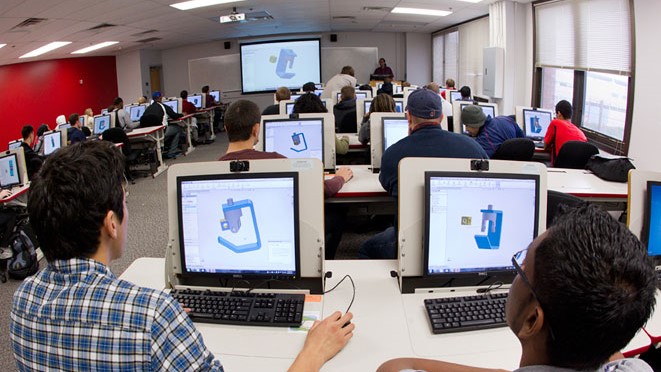When I began my position as a science and engineering librarian last year, I quickly learned that many of my library instruction practices weren’t relevant to the needs of my new user community. The nature of STEM research and teaching requires its own unique approach. Here are three challenges I encountered in STEM library instruction and how I’ve worked through them.
One: Students aren’t expected to use books and articles for their assignments
In my previous position working with interdisciplinary writing classes, I spent the bulk of my time helping students locate books and articles, the resources most commonly associated with libraries. However, many science assignments do not require these kinds of materials. Students in STEM classes are often evaluated on information from textbooks and lectures, and may not be asked to find information from additional sources.
So how can librarians help students who don’t need traditional library resources? Think beyond the classroom. As a starting point, I try to identify the kinds of information students will need in the lab, and in their careers. Future engineers often need help obtaining industry standards, for example, and chemistry students want reliable sources for information on the properties of their lab chemicals. By helping students and faculty find these types of resources, librarians can support the academic and professional goals of the STEM community. We do this while positioning ourselves as experts in navigating the larger information landscape.
Two: Many STEM students don’t have writing assignments
Because science work often happens in a lab, and assessment takes the form of exams, many STEM instructors don’t believe the library has anything to offer their students. I see this as an opportunity to highlight our services, and show that librarians are not just information providers. The services I promote depend on the concerns of the group I’m meeting with. For graduate students who intend to publish, I might talk about measuring research impact and identifying predatory journals. I connect engineering classes to our makerspace, and students who perform a lot of laboratory research to our data services group. I cover topics such as research data management when I’m working with students who are involved in a lab.

That being said, every STEM program includes some classes that involve writing and research. At the start of every semester, I comb the catalog to find course descriptions that mention research methods, theses/capstones/dissertations, ethical or cultural implications, or lab reports. Because these classes are likely to require writing, instructors are often especially interested in the library’s databases and journals.
Three: STEM classes can’t spare time for a library session
Between lectures and labs, many STEM syllabi are too packed to sacrifice time for a library session. One way to reach students when I don’t have access to the classroom is to hold workshops they can opt to attend outside of class. I’ve taught some hour-long sessions on research data management and am working on a literature review workshop — both areas that STEM professors have told me their students need extra assistance with. If you can get instructors to give extra credit for attending (or if you can provide pizza!) you have a good shot at reaching students through these optional sessions.
I’ve also expanded my definition of instruction to include less traditional forms of teaching. I often collaborate with instructors to develop research-based homework assignments. These assignments introduce students to important information literacy concepts and give them hands-on experience with library resources. I also create online guides for individual courses, which connect students to the specific databases they’ll need to complete their assignments. This allows me to support STEM students even if I never have the opportunity to meet with them in person.




